Some cars are built for the road, while others are destined for the racetrack. The 1965 Chevrolet Chevelle 300 Funny Car, also known as the Tiger II Chevelle, falls into the latter category. One of the first AFX drag cars ever built, this machine is a true rarity in the world of classic racing vehicles.
After decades of racing, name changes, and engine modifications, this iconic car has now undergone a meticulous five-year restoration, bringing it back to its former glory. Although it is museum-ready, it is still built to run, capturing the essence of 1960s drag racing. This article delves into the car’s rich history, its various transformations over the years, and the painstaking restoration that has ensured its place in racing history.
Origins and Early History
The 1965 Chevrolet Chevelle 300 was never intended to be an ordinary street car. From the moment it was built, it was meant to dominate the drag strip. Unlike typical production models, this car was originally delivered as a rolling chassis—without a VIN number or a title—to Jim and Andy Adcock of Amarillo, Texas.
At the time, Jim Adcock had an existing sponsorship deal with Esso, a petroleum company well known for its “Put a Tiger in Your Tank” advertising campaign. This sponsorship inspired the car’s original name: Tiger II.
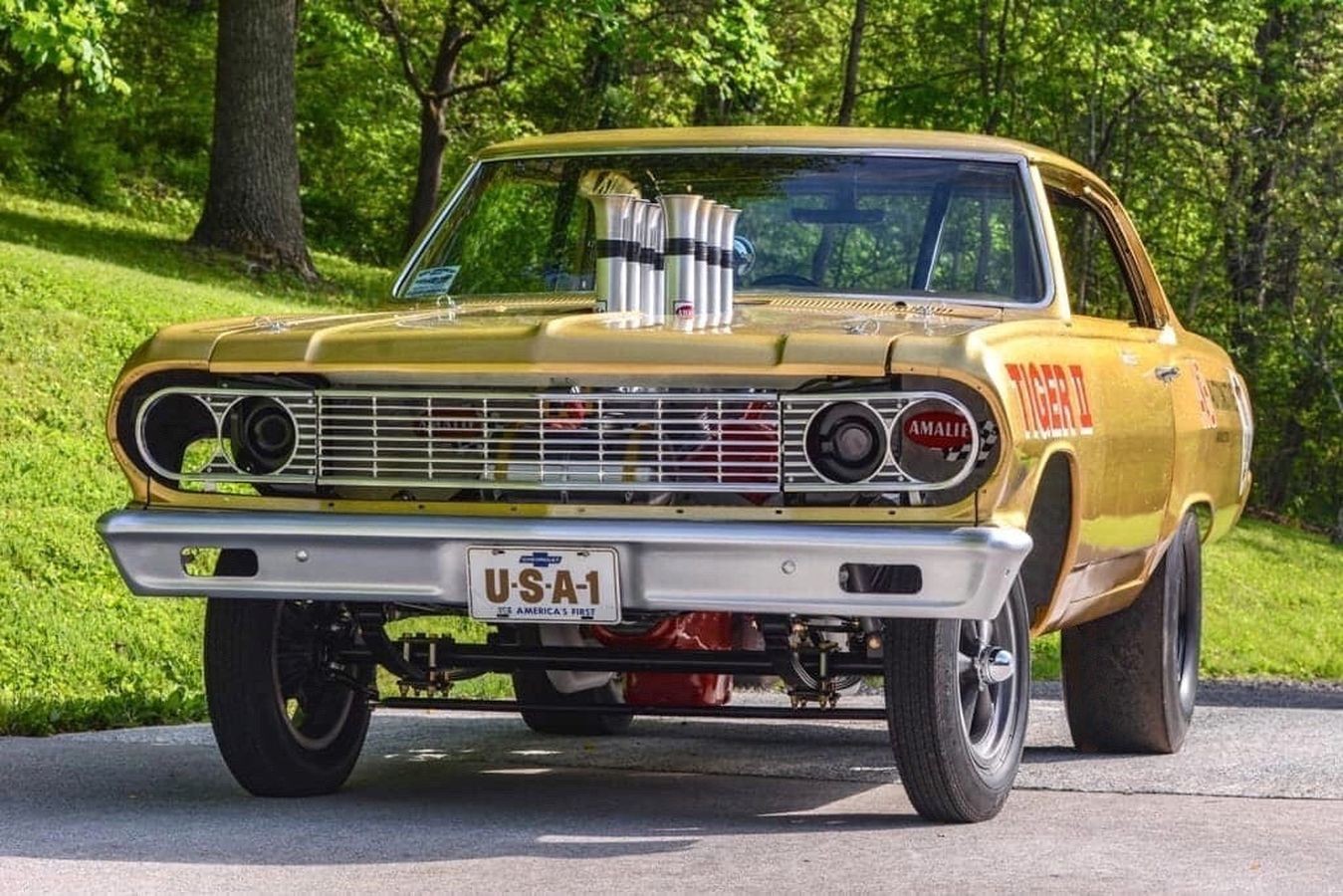
Evolution and Performance Upgrades
Like most race cars, the Tiger II Chevelle did not remain in its original form for long. As the competition intensified, numerous modifications were made to enhance its performance.
Early 1965: The First Build
- The car’s front end was modified by Fibercraft, a company specializing in lightweight racing bodywork.
- A fiberglass hood and fenders were installed, molded from a 1964 Chevelle front end.
- A straight front axle was added for weight reduction and improved weight transfer.
- A Pontiac rear axle was chosen to handle the extreme power output.
- Under the hood, a 376 cubic-inch small-block Chevy engine with Enderle fuel injection was installed.
- It ran on a 30% load of nitromethane, a fuel commonly used in drag racing for increased horsepower.
This initial setup was powerful, but as drag racing evolved, more modifications were needed to keep the Tiger II competitive.
Mid-1966: Major Engine Upgrade
- A more powerful 427 cubic-inch big-block Chevy engine was installed.
- The new engine featured a Hilborn fuel injection system, improving performance and reliability.
- Additional adjustments were made to the wheelbase and chassis, optimizing weight distribution for better traction.
By this time, the car had become a well-known competitor in the AFX (A/Factory Experimental) drag racing scene, which was a precursor to the modern Funny Car class.
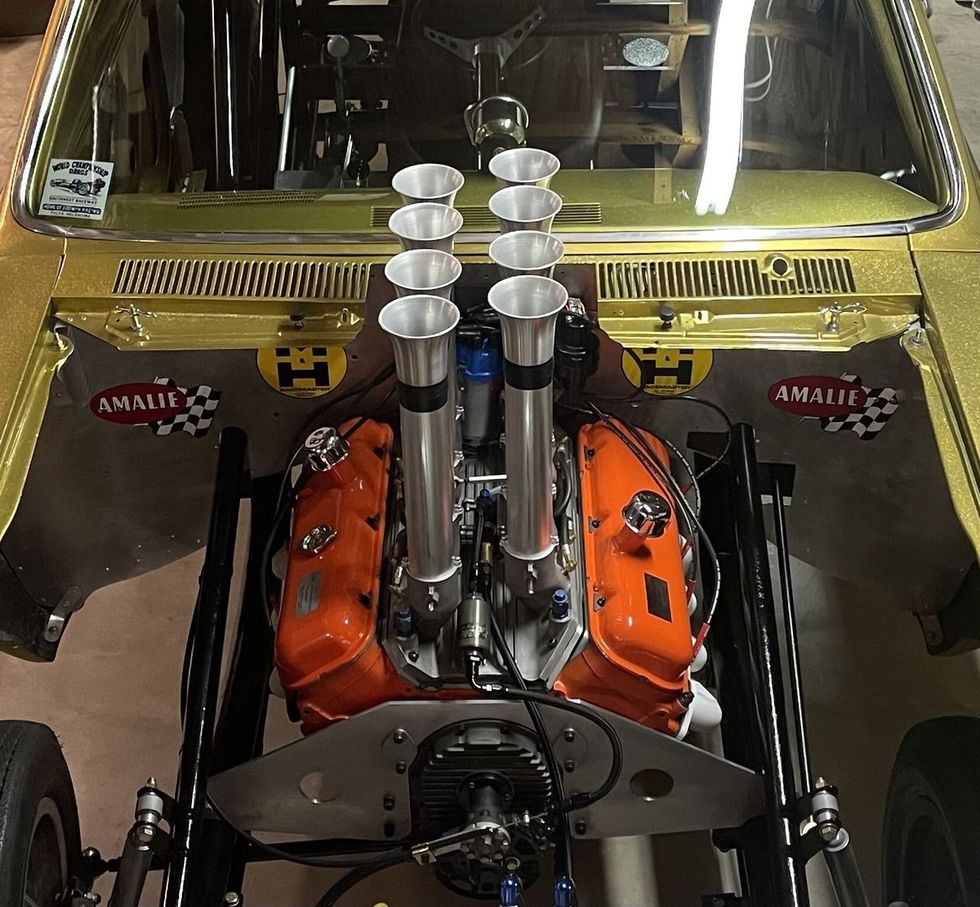
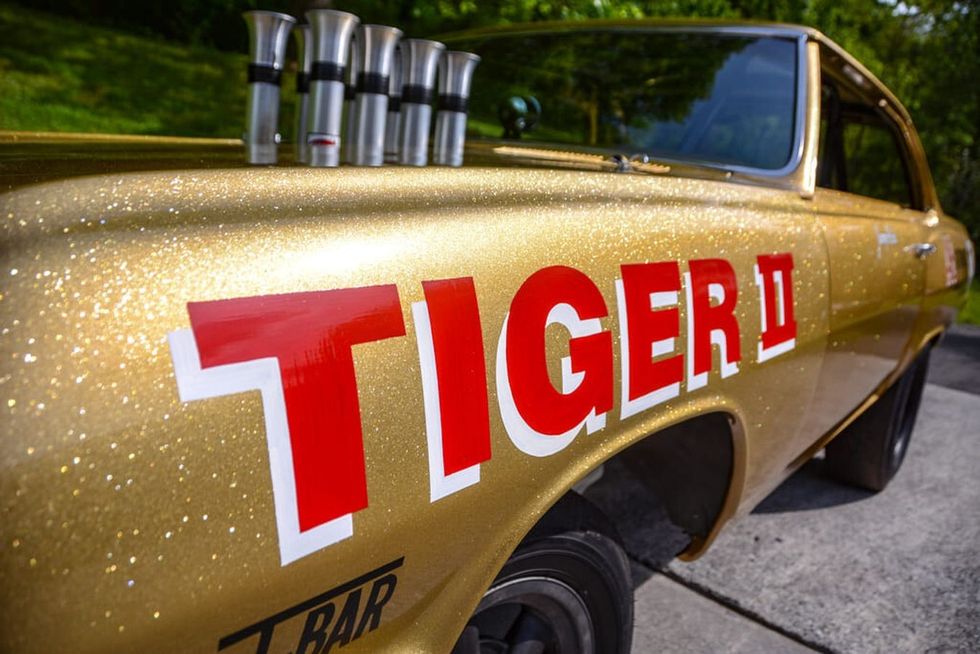
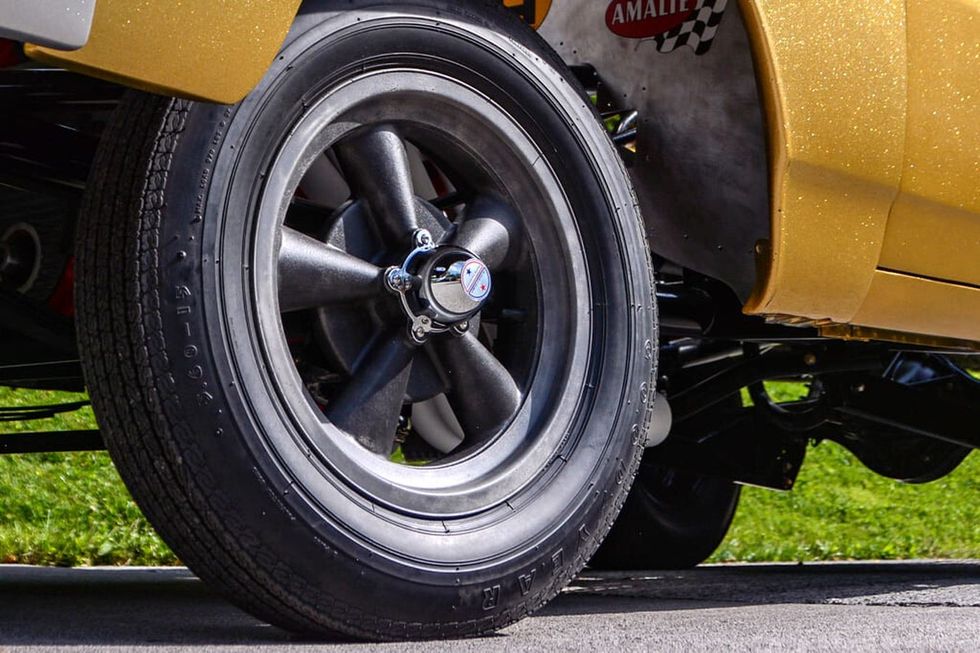
Rebranding and Name Changes
By 1967, the car underwent another transformation. With the Esso sponsorship ending, it was given a new blue paint job and rebranded as the Blitzer.
- It was rumored that Adcock experimented with a blown and injected big-block Chevy engine, but the NHRA (National Hot Rod Association) regulations at the time did not permit this configuration.
- As a result, the engine was removed, and eventually, both the car and the engine were sold.
Despite these changes, the Chevelle’s racing career was far from over.
New Ownership and the “Funny Money” Era
By the early 1970s, the car had changed hands again. Under the ownership of Jerry Rhodes, it was given yet another new name: Funny Money.
- During this time, it continued to race and make a name for itself on the drag strip.
- Its high-performance modifications allowed it to remain competitive in various racing events.
By 1973, however, the car had reached the end of its competitive career. While some race cars fade into obscurity, the Tiger II Chevelle had one more unexpected chapter ahead.
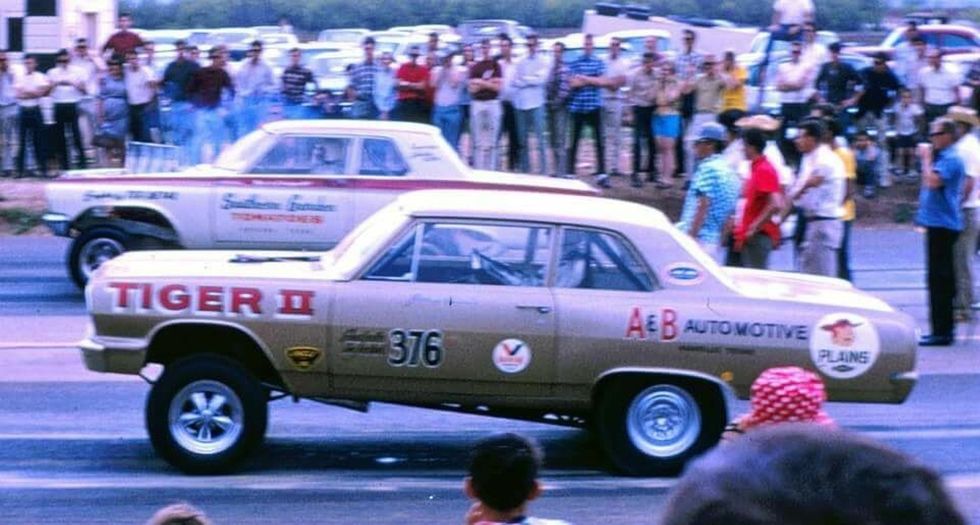
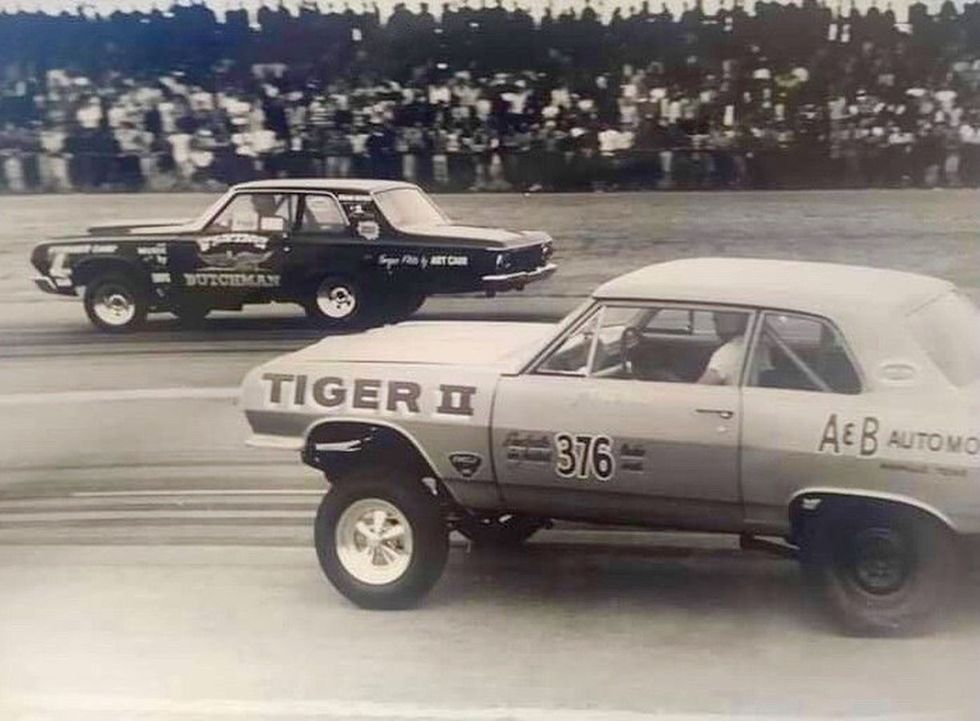
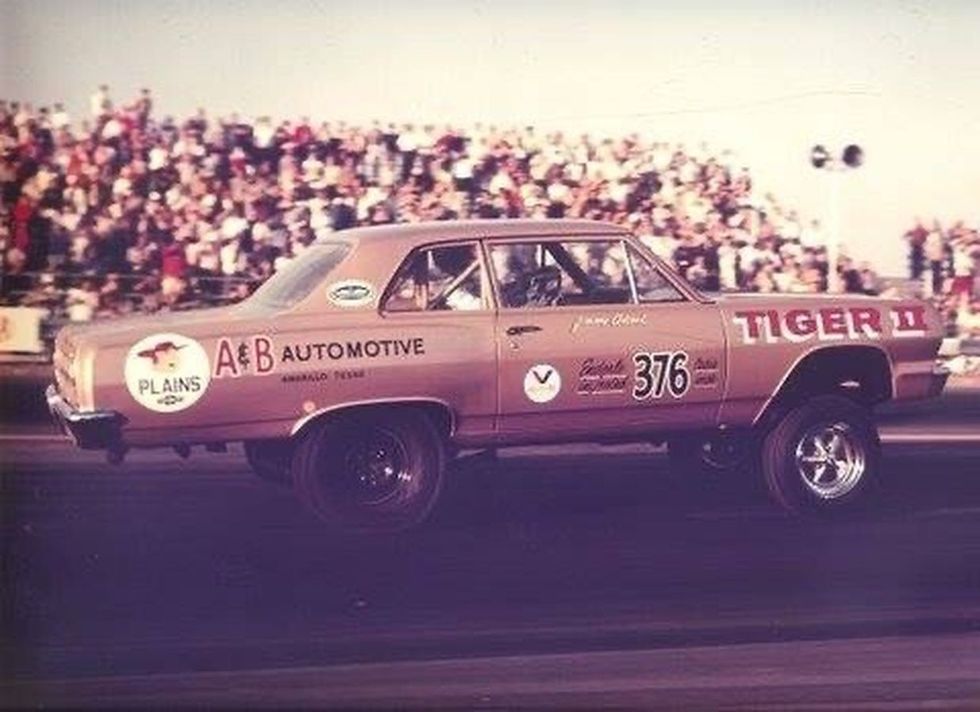
Exhibition and Showcasing
After its racing career, the Chevelle took on a new role as an exhibition vehicle.
- It was featured in wheelstander exhibitions, where cars perform dramatic wheelies while driving down the strip.
- It ran alongside famous exhibition vehicles like:
- The Little Red Wagon (a Dodge A100 pickup famous for its wheelstanding stunts).
- Hemi Under Glass (a Plymouth Barracuda built to showcase Chrysler’s HEMI engine).
For years, this historic Chevelle entertained crowds with its impressive power and performance.
The Five-Year Restoration Project (2018-2023)
After decades of racing and exhibition runs, the Tiger II Chevelle was in need of serious restoration. In 2018, a dedicated team set out to bring this legendary Funny Car back to life.
Restoration Highlights
- A complete no-expense-spared restoration was undertaken, taking nearly five years to complete.
- The goal was to return the car to its original 1965-1966 form, as it appeared during its peak racing years.
- The gold metallic flake paint job was meticulously recreated.
- Many original components were preserved, including:
- The magnesium spindle mount front wheels.
- Various chassis and suspension components.
Under the hood, the car was rebuilt with authentic high-performance components:
- A Hilborn-injected 427 cubic-inch big-block Chevy engine, built by Randy Bradford (known for Bradford’s Fiat Fuel Altered).
- A Mike’s Transmission Ultimate 400 system.
- A Mark Williams drivetrain, ensuring it could still compete in modern nostalgia AFX racing.
Despite being restored to showroom condition, this car is not just for display—it is still fully functional and capable of running on the track.
Current Status and Legacy
Today, the Tiger II Chevelle stands as one of the rarest and most historically significant Funny Cars in existence.
- It has been restored to its original racing glory, preserving the spirit of 1960s drag racing.
- It remains one of the few original AFX Funny Cars still in existence.
- The restoration project was documented in a YouTube video by Hot Rod Hoarders, providing enthusiasts with a detailed look at its transformation.
With all its historical documentation, old magazine features, and restoration records included, this car is more than just a collector’s item—it is a piece of drag racing history.
Conclusion
The 1965 Chevrolet Chevelle 300 Funny Car is a true survivor from the golden age of drag racing. From its early days as the Tiger II to its later years as Blitzer and Funny Money, this car has seen it all—racing victories, sponsorship deals, exhibition shows, and now a full restoration.
While many vintage race cars are lost to time, this Chevelle has been preserved and brought back to life, ensuring that future generations can appreciate its legacy. Whether displayed in a museum or tearing down the track once again, this historic Funny Car is a shining example of the innovation and excitement of 1960s drag racing.
